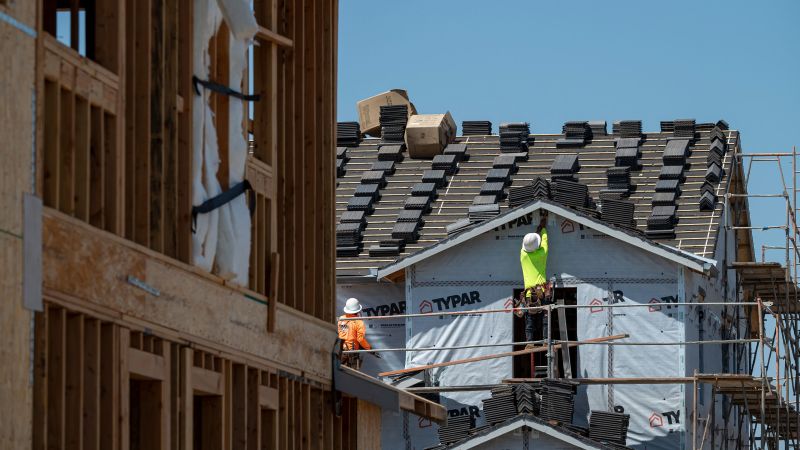Start learning AI in 2025
Everyone talks about AI, but no one has the time to learn it. So, we found the easiest way to learn AI in as little time as possible: The Rundown AI.
It's a free AI newsletter that keeps you up-to-date on the latest AI news, and teaches you how to apply it in just 5 minutes a day.
Plus, complete the quiz after signing up and they’ll recommend the best AI tools, guides, and courses – tailored to your needs.
“I’d rather regret the things I’ve done than regret the things I haven’t done.”
— Lucille Ball
THE ART OF LEADERSHIP
Embracing Action Over Inaction
The Leadership Lesson in Lucille Ball's Words
"I'd rather regret the things I've done than regret the things I haven't done," said Lucille Ball, highlighting a powerful principle for leaders. In leadership, hesitation can be more damaging than making mistakes. Taking action, even at the risk of failure, often leads to growth and innovation.
Leaders who avoid action out of fear miss opportunities to advance and inspire. Mistakes can be corrected, and lessons can be learned, but inaction leaves nothing but regret and stagnation. Embracing Lucille Ball's perspective encourages leaders to take bold steps, fostering a culture where calculated risks are valued.
Consider the leaders who have made significant impacts; they are often those who dared to act despite uncertainties. Their willingness to move forward, make decisions, and accept possible errors sets them apart. By acting, they open doors to new possibilities and pave the way for progress.
In your leadership journey, ask yourself: Are you holding back due to fear of making mistakes? What opportunities might you be missing by not taking action? Reflect on Lucille Ball's words and consider embracing action over inaction. The regrets of things left undone can weigh heavier than missteps made along the way.
COMMERCIAL CONSTRUCTION
Historic NRC Approval
Kairos Power’s Hermes 2 Becomes First Electricity-Producing Gen IV Reactor Cleared for Construction in U.S.
In a groundbreaking move, the Nuclear Regulatory Commission (NRC) has approved construction permits for Kairos Power's Hermes 2, marking the first time an electricity-producing Generation IV reactor will be built in the United States. The 70-MWth advanced test facility, consisting of two 35-MWth molten salt reactors, is set to be constructed at the East Tennessee Technology Park in Oak Ridge, Tennessee.
This historic approval signifies a major leap forward in nuclear technology and energy production, potentially reshaping the future of clean energy. Kairos Power's iterative approach, involving the non-power Hermes 1 reactor and Engineering Test Units, aims to de-risk the technology before full commercial deployment.
With construction of Hermes 1 already underway and expected to be completed by 2027, Hermes 2 could begin operations by December of the same year, providing a combined electrical output of 20 MWe. The swift approval process by the NRC, completed in just 16 months, highlights the efficiency and collaboration between the regulatory body and Kairos Power.
As the world grapples with energy demands and climate change, could this be the turning point for advanced nuclear reactors in the U.S.? What implications does this have for the future of clean energy and technological innovation? The conversation around nuclear power is poised to shift, inviting discussions on safety, sustainability, and the role of government regulation in accelerating technological advancements.
With NRC's swift approval of Kairos Power’s Hermes 2, the first Gen IV reactor in the U.S., could this reshape clean energy? What challenges might still lie ahead?
#NuclearInnovation #CleanEnergy #GenIVReactor
— #The Dig Daily Dose (#@TheDigDailyDose)
6:16 PM • Nov 25, 2024
INFRASTRUCTURE INDUSTRY
State Infrastructure Ballot Measures
California Leads in Climate Resiliency, Mixed Results Elsewhere
Voters across the U.S. weighed in on key infrastructure-related ballot measures during the November 2024 election, resulting in mixed outcomes that reflect regional priorities and challenges. From California’s historic climate resilience investment to the rejection of major initiatives in Oklahoma and North Dakota, the results carry significant implications for future infrastructure planning and funding.
California Sets a Bold Climate Agenda
California voters approved Proposition 4, a $10 billion bond measure aimed at fortifying the state’s water supply, addressing sea-level rise, and advancing energy infrastructure. With 58.9% support, this measure stands as California’s largest climate resiliency investment to date, mandating that at least 40% of funds target communities vulnerable to climate change. However, Proposition 5, which sought to lower the threshold for local jurisdictions to issue bonds for affordable housing and public infrastructure, failed with only 44.3% approval.
Meanwhile, Proposition 32, which proposed increasing the state’s minimum wage to $18, faced resistance, with unofficial results showing 51.3% opposition.
Oklahoma Rejects Local Infrastructure Financing
Oklahoma voters turned down State Question 833, which would have allowed municipalities to create Public Infrastructure Districts (PIDs) with the authority to issue bonds for local projects like roads and water systems. The initiative failed with 61.6% opposition, reflecting concerns about additional property taxes.
Rhode Island Invests in Green Infrastructure
Rhode Island’s Question 4, a $53 million green bond, received strong support, with 67.4% voting in favor. The funds will enhance environmental infrastructure, recreation areas, and climate resilience initiatives, including grants to cities and nonprofits for infrastructure improvement.
North Dakota and Other States Resist Property Tax Changes
North Dakota voters rejected Measure 4, which sought to eliminate property taxes and replace the revenue through state funding. This measure faced criticism for its potential impact on local government budgets. Similarly, Kentucky and Nebraska voters upheld restrictions on funding for nonpublic schools, signaling ongoing debates over public resources.
What’s Next?
As states grapple with climate change, aging infrastructure, and evolving financial needs, these mixed results highlight regional differences in priorities and approaches. California’s ambitious climate investments could set a precedent, while the rejection of measures in other states suggests caution about fiscal impacts.
The outcome of these ballot initiatives underscores the growing need for innovative and equitable funding mechanisms to address infrastructure challenges nationwide.
With California's $10B climate resiliency bond approved and other states showing mixed support for infrastructure, how can regions balance bold investments with fiscal caution?
#ClimateResilience #InfrastructureFunding #BallotMeasures
— #The Dig Daily Dose (#@TheDigDailyDose)
6:14 PM • Nov 25, 2024
RESIDENTIAL RESEARCH
Mass Deportations Threaten to Upend Housing Market Amid Skilled Labor Crisis
As the US braces for potential mass deportations under President-elect Donald Trump, housing industry experts warn of severe repercussions for an already strained housing market. The construction sector, critical to addressing the nation's housing affordability crisis, relies heavily on immigrant labor. Deporting millions of undocumented immigrants could disrupt the workforce and drive up costs for new homes.
Undocumented immigrants like Duewight Garcia, who has worked in construction since overstaying his visa in 2019, play a pivotal role in the industry. "We do the work no one else wants to do," said Garcia. In some states, such as California, Texas, and New York, over half of construction workers are foreign-born, with many being undocumented.
Jim Tobin, CEO of the National Association of Home Builders, emphasized that immigrant labor is essential for building homes affordably. "Without them, our ability to meet housing demands is at risk," Tobin warned. The US faces a shortfall of 1.5 million homes, with 282,000 construction jobs currently unfilled. Deportations could exacerbate this crisis.
Critics of Trump's plan, such as Stan Marek, CEO of MAREK Construction, argue that removing undocumented workers without viable replacements would "decimate the residential housing business." Although proponents claim American workers could fill the gap, experts point to a lack of vocational training and an aging workforce as barriers to rapidly addressing the shortfall.
Mass deportations may also lead to unintended economic consequences. Studies suggest undocumented labor complements domestic jobs, with deportations potentially causing net job losses for US-born workers in higher-skilled positions. Meanwhile, housing prices could rise as construction slows, adding to the affordability crisis.
The debate underscores the intertwined nature of immigration and the economy. While Trump and his supporters argue for stricter immigration enforcement, others call for policies to balance border security with economic realities. For workers like Garcia, the hope is for recognition of their contributions. "If they deport a million workers, construction will slow, and housing prices will rise. We’re helping keep the economy balanced," Garcia said.
As the housing market hangs in the balance, the nation must grapple with whether mass deportations are a practical solution or a costly misstep.
With mass deportations looming, how can the U.S. balance immigration enforcement with the critical role immigrant labor plays in housing affordability?
#HousingCrisis #ImmigrantLabor #SkilledWorkerShortage
— #The Dig Daily Dose (#@TheDigDailyDose)
6:11 PM • Nov 25, 2024
TOOLBOX TALK
The Importance of Cybersecurity Awareness on Construction Sites
Introduction
Good morning, Team! Today’s toolbox talk is about a modern and unique topic: cybersecurity awareness on construction sites. As technology becomes an integral part of construction, from project management software to drones and IoT devices, cyber threats are becoming a real concern. Hackers can target construction companies for sensitive data, project disruptions, or even ransomware attacks. Understanding basic cybersecurity practices helps protect not just our data, but also our equipment, operations, and reputation.
Why Cybersecurity Awareness Matters
Cyberattacks can compromise project timelines, cost money, and even threaten safety by disrupting critical systems. As construction becomes more digitized, everyone has a role to play in protecting sensitive information, whether it’s client data, project plans, or access to connected systems.
Strategies for Cybersecurity Awareness
Protect Your Devices: Ensure that all devices used on-site, including smartphones, tablets, and laptops, are password-protected. Use strong, unique passwords and enable two-factor authentication (2FA) wherever possible.
Avoid Public Wi-Fi for Work: When accessing project management tools or sensitive information, use secure, private internet connections rather than public Wi-Fi, which is vulnerable to hackers.
Be Wary of Phishing Emails and Links: Do not open suspicious emails or click on unknown links. Cybercriminals often use phishing attacks to steal information or install malware on devices.
Update Software and Systems Regularly: Outdated software is a common target for hackers. Keep all devices, apps, and systems up to date with the latest security patches.
Secure Project Data: Avoid sharing project information or passwords over unsecured channels. Use encrypted methods or approved platforms for communication and data sharing.
Report Suspicious Activity: If you notice any unusual activity on your devices or in project management systems, report it immediately to your supervisor or IT team.
Discussion Questions
Have you or someone you know encountered a cyber-related issue at work? What happened, and how was it resolved?
What cybersecurity practices do you already use, and what could be improved on-site?
How can we enhance awareness and training to better protect our team and project data?
Conclusion
Cybersecurity is a growing concern on construction sites as technology becomes central to our work. By protecting devices, avoiding phishing traps, keeping software updated, securing project data, and reporting suspicious activity, we can reduce the risk of cyberattacks. Let’s all commit to practicing good cybersecurity habits and protecting both our work and our team.
Stay secure, stay productive!









